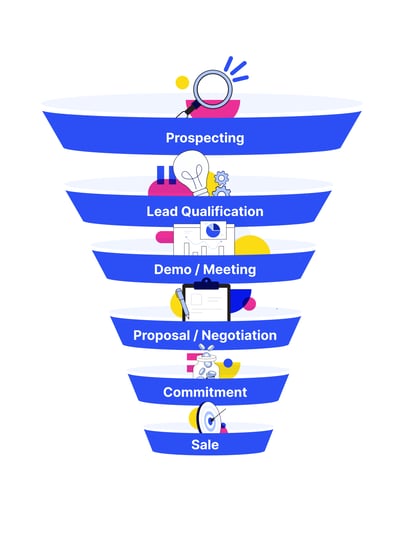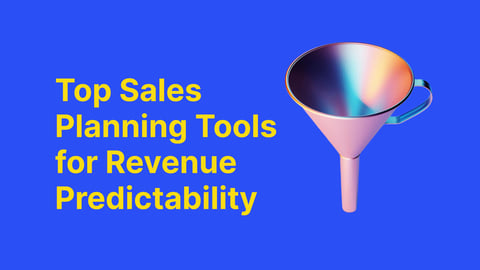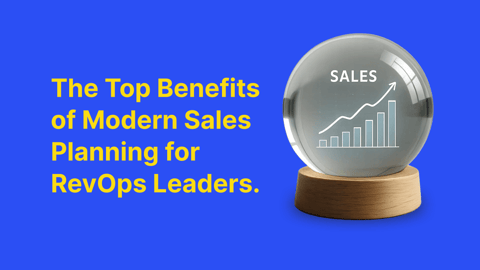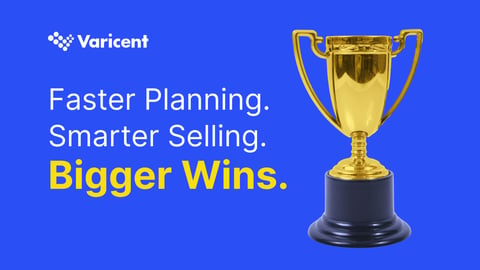Sales pipelines and sales funnels. They're the same thing, right? Well, no, not really. They often get used interchangeably, but they’re both important to a sales team looking to hit target.
In this article, we look at what we mean by the terms sales pipeline and sales funnel, why they both matter, and how to optimize them both, so you can be successful.
Let's deep dive into sales pipeline vs. funnel.
- What Is a Sales Funnel?
- Optimizing Your Sales Funnel
- The Benefits of a Defined Sales Process and Funnel
- What Is a Sales Pipeline?
- Why Analyze Your Sales Pipeline?
- Sales Pipeline Tools and Techniques
What Is a Sales Funnel?
A sales funnel focuses on the elements of the normal sales process a salesperson would follow to close an opportunity, either a close win or a close loss.
A sales funnel model provides you with an easy-to-understand view of where your prospect is in a sales cycle and what the next steps are likely to be. You’ll want to make sure that you have progress throughout the sales process, rather than continuation. You also want to identify those opportunities that you can't win qualified out as early as possible, regardless of what it will do to your sales pipeline.
Here's a visual representation of what a sales funnel looks like:

Sales Funnel
The sales process starts with the lead generation and prospecting phase, which will create a large pot of potential opportunities and will flow through to a selection of increasingly qualified, but a steadily smaller selection of, opportunities that will – hopefully – produce a closed-win.
Let's take a closer look at each of these stages:
Prospecting and Lead Generation
Building the sales funnel will be the work of the marketing function and the sales team. The marketing team will produce campaigns using social media, PR, email, events, and webinars to promote your solution or service. This will lead to prospects – the leads – engaging with you, to say ‘We’re interested in what you have to offer.” In parallel, the sales team will be doing their own prospecting in their territories and accounts to find their own leads.
Qualification
The qualification stage is where a sales rep begins to understand the prospect's issues. A sales rep also begins to think about how well a product or service will meet these needs. This will be informed, in part, by the scale of the impact of an issue, the potential price of a solution, and whether your approach to solving a problem will work for a prospect.
An important part of qualifying is understanding the ultimate decision-maker in a transaction. It may be the person you’re engaging with in a low-value transaction. In a larger-value transaction, a higher level of approval is likely needed, extending the sales cycle significantly.
You also need to confirm the approved budget for this project, the time scales involved, and what’s driving them.
Effective qualification is probably the greatest single differentiator between successful and unsuccessful campaigns.
The Proposal and Post-proposal Stage
With a thorough understanding of the prospect's needs, you can present your solution, together with the business case and the outline costs. Clearly, you’ll factor in the presence of other competitors in the picture too. Post-proposal sales activities might involve presenting customer case studies and arranging customer reference visits so a prospect can understand how your offering impacts customers in the real world.
Commitment
A prospect, especially in the larger deals, will engage in a parallel qualification process to your own, probing potential suppliers about their strengths and weaknesses. You’ll emerge from this process as the prime bidder with hard work and good fortune. Once this is clear, the prospect typically commits to their preferred vendor, while any detailed negotiations occur. They’ll keep a couple of potential suppliers in their “back pocket” just in case there are contractual issues.
The Sale
Congratulations! You've closed the sale and are moving towards the order fulfillment, followed by the implementation phase. Remember to ensure you provide exceptional service during customer onboarding and regularly monitor the account's progress.
The best sales pipeline software can help sales managers and their teams at each of these critical stages – learn the Top Six Benefits of Sales Pipeline Software for Better Sales Performance.
Optimizing Your Sales Funnel
It’s very difficult to underestimate the value of a well-defined and well-executed sales funnel process. Time spent on thoroughly qualifying an opportunity is time well spent. You only want to invest your time and effort in those opportunities you think are most likely to close. Time spent trying to convert marginal opportunities is time a salesperson cannot get back.
Assuming you have plenty of the ideal opportunities going through your funnel at any one time, the next step is to ensure that they all move through the process smoothly and efficiently. This means identifying and fixing any blockages that can slow deals through the process. This might be identifying the ultimate decision-maker, justifying the pricing model through demonstrating superior value or demonstrating the technical capabilities effectively, for example.
Optimizing your sales funnel means constantly analyzing and assessing how well your opportunities are progressing through the sales process and finding ways of reducing the sales cycle.
The Benefits of a Defined Sales Process and Funnel
The sales funnel model works so well for businesses of every size because it covers the sales process from the first contact with an opportunity, prospect, or lead through the sale to aftercare, repeat business, and future upgrades. It also gives a business a better level of control and visibility over the sales cycle.
A well-managed sales funnel, in tandem with supporting sales software, potentially provides the following advantages:
- More streamlined sales
- The ability to forecast business results
- Clarity on how to allocate resources to support sales
- An analysis of whether the sales strategy is working for your business
- An overview of current fiscal and territorial progress
- Insight into where you are in terms of your KPIs and targets
In an ideal sales environment, your team is ready and able to sail through each stage, securing the fruits of a successful deal in a timely and financially rewarding manner. But, without implementing the right tools, you're exposed to the dangers of sticking midway or even going backward.
An effective sales performance management (SPM) tool can help your teams move forward without having to fight through a thicket of spreadsheets, unreliable data, or lose focus and drive due to poorly directed resources and a lack of adequate compensation.
Now that we've clarified what a sales pipeline is and its many benefits, let's turn our attention to the definition, specifics, and applications of the sales pipeline.
What Is a Sales Pipeline?
We've established that the sales funnel focuses on the series of actions taken by salespeople. In contrast, a sales pipeline is more market-focused. It looks at the whole customer journey from the point of view of a prospect, from initial interest to engagement with the sales team. It focuses on the number of engagements and level of conversion rates of prospects through the various pipeline stages.
If a sales funnel focuses on quality over quantity, the sales pipeline focuses on scale that will in due course drive the quality of engagements that the sales team needs to be successful.
All this matters because the sales and marketing pipeline is crucial to the sales funnel of individual opportunities.
The Anatomy of a Sales Pipeline
The key point to understand about a sales pipeline is that it covers the broader market engagement. It’s an ongoing process that covers building awareness of a business and how it can help the initial engagement before any salesperson gets involved.
Let's explore the various stages.
Attention
The attention phase is where a business builds awareness of the brand or product and its uses, and how it can help people address their issues or needs. This typically covers activities like direct marketing mail-outs, emails, brand and advertising campaigns, social media campaigns, blogs, promotional competitions, and more. These will focus on the market where your product offers the right solution, with a focus on engaging at the right time, with the right prospects, in the right way. Ideally, these initiatives will drive interest and attention to your website. That said, there is still value in “getting your name out there” with the right audience so that when they might need your product at a later date, they know where to go.
Interest
Now you have their attention, the next step is to develop their interest further, so they start to qualify out your competitors and begin building a potential relationship with your business. This may well start slowly, with high-level messages pitched at the emotional level, based around “Fear of Missing Out” (FOMO) or “Fear, Uncertainty, and Doubt” (FUD), that will point to more detailed information about how a product or service matches its early promises. This material might feature videos, whitepapers, implementation guides, customer recommendations, and anything that proves your product or service.
Decision
The decision phase encourages prospects to begin to engage with you, solve their problems, or address their needs. This can be achieved, for example, through invitations to events, webinars, or where you might meet – with many others - the people you might end up working with. This is typically where you begin to highlight the business case for your offering, whether it be cost savings, new revenues, or addressing other needs.
Behind the scenes of all this marketing and brand activity is a deeper campaign, where the object is to get a potential customer to trust in you, agree with your approach, and see the value to their business in what you're trying to sell.
Action
The action phase focuses on encouraging people – as the name suggests – to pick up the phone, send that email, or register on the website for a demo. It could start the process of arranging a meeting with a buyer or organizing a product trial run, for example. The good news is that achieving the “action” stage means the sales and marketing activity is working and people are taking notice of your product.
Clearly, this process will be happening at scale and at speed. In some cases, the process will take weeks and months, in others it will take minutes or hours.
At Varicent, we take the sales funnel and its benefits so seriously, we even offer a dedicated sales performance management (SPM) solution to help businesses navigate this more successfully.
Why Analyze Your Sales Pipeline?
Like the sales funnel, you want to maximize the number of opportunities in your sales pipeline, as well as speed them through the process as smoothly and efficiently as possible. This will maximize revenues, as well as support a business’ critical cash flow.
How does this work?
You have access to a remarkable array of customer and prospect data from your website, your social media outlets, your events, and your webinars. You can understand their whole history, how they engaged with you, what the conversations have been about, what they’ve read, and what they’ve downloaded. With the right tools, you can see the end-to-end process and how long it typically takes for someone to begin their research to when they say they want to speak with a sales rep. You have the capability to see what parts of your pipeline are working well and which need more attention.
Can I Use the Sales Pipeline and Sales Funnel Together?
You should review your sales funnel and your sales pipeline in parallel, as they’re interdependent.
Your sales pipeline will feed your sales funnel, and you need to ensure there are enough potential opportunities in your pipeline to constantly feed the funnel, as deals are qualified out or closed.
We recommend that sales and marketing managers regularly review both their sales funnel and sales pipeline. If you hone your pipeline and funnel engagement processes, you'll put your sales team in a strong position to achieve their goals and sales targets.
Tools and Techniques of the Trade
We’ve looked at the differences between your sales pipeline and sales funnel, and how they work together. Now let’s explore the tools and techniques that can help you optimize your sales pipeline and your sales funnel.
Of course, there are hundreds of books that expound various theories on navigating funnels and pipelines and plenty of sales gurus that preach their brand of motivational good practice, but aside from all that received wisdom, we recommend partnering up with some great sales software before creating some sales magic of your own.
The right sales performance management platform can produce value-rich reports and relevant metrics, which in turn will help your sales teams conquer both funnels and pipelines in style and on target.
Some may argue otherwise, but there's no exact science to selling. Sudden economic downturns, breaks in the supply chain, and global pandemics; these situations all carry the weight of the unexpected and the ability to ruin an excellent sales strategy. But with the right tools to analyze market conditions, you and your salesforce can successfully sail through the choppiest waters.
Dive into why a purpose-built planning solution will help you remove friction, adapt strategies, and outdo past performance with our free sales planning guide, Set Goals That Maximize Revenue Potential.




